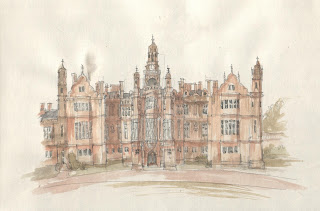Following on from my last post, I was pondering that vexing question...'I've just bought something great from a vintage or charity shop or ebay, but how do I clean it?'
First off, does it need cleaning? Check it carefully all over and smell it. If it is clean but fusty, try hanging it overnight in a room (or even outdoors) to see if it smells better. Do not spray with Febreze or similar, these cleaners are damaging.
Secondly, how to clean it? The important thing here is to identify the material and any trims. There won't be any care labels or materials listed on any vintage item. If it is cotton, knitted wool, linen, polyester, Dacron or nylon you should be able to wash it yourself. Don't put it in the machine! I handwash with Alur liquid wash (small things in the sink, large in the bath). Always use tepid water so things don't shrink and dry them naturally.
If you don't think you can clean it, take it to the dry cleaners. I go to Timpson's who will offer an honest opinion on if it can be dry cleaned and many other useful thoughts. Build up a relationship with your dry cleaner, I always get this great lady in the Timpson's in Sainsbury's Garthdee. Usually dry cleaners will do your woven wool such as coats, jackets and skirts. They avoid early synthetics which can dissolve during the process. Beading, sequins, fur, buttons and metals can also be damaged by the chemicals.
Avoiding cleaning: This idea is anathema to us today, but in history elaborate garments were rarely cleaned. They were worn with washable layers beneath so they didn't get dirty. Long dresses even had detachable hems to collect mud and dirt. In the 1930s and 40s dress shields were worn (still available) in the armpits to prevent the horror of sweat ruining your dress. Be careful of sweat, also of foundation, fake tan and greasy make-up etc touching your garment when you wear it. The easy way to avoid these problems is to buy vintage clothes that don't need cleaning often, such as coats, jackets, skirts and evening dresses. Avoid anything you wear everyday or next to the skin unless you are sure you can care for it.
Altering vintage: Feel free to remove any non-original alterations but please don't alter anything special or from before 1970 or the Curator in me will feel a disturbance in the force. Respect the History.












